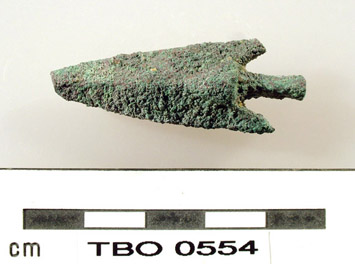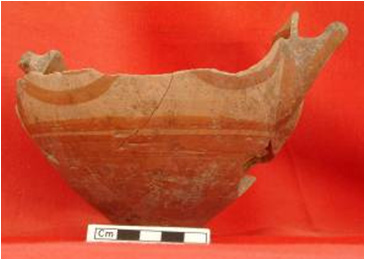The cemetery at Saqqara is one of the most important archaeological sites in Egypt. Over six kilometres long, it boasts thousands of underground burial sites, as well as the six-step Djoser pyramid – Egypt’s oldest pyramid. The ruins at Saqqara have long attracted the interest of explorers, grave-robbers and local people. Travellers first reported evidence of antiquities at Saqqara in the 16th century. The Djoser Pyramid and the smaller pyramids around it were hard to miss – but the size of the necropolis only became apparent with the advent of excavations in the 19th century. It was not until Napoleon…
-
-
Key Dates Tikal was at its height between 200 and 900 AD Tikal Guatemala Tikal, in the jungles of Guatemala is one of the largest archaeological sites and urban centres of the pre-columbian Mayan civilization and was at its height between 200 and 900 AD. The park contains 222 square miles of jungle, and the residential area of Tikal itself covers 23 square miles encompassing 1000s of structures of which very few have been excavated. The University of Pennsylvania took 13 years to uncover 10 square miles of architectural remains, so there are most likely a number of structures in…
-
It’s long been a common stereotype that Akhenaten was a pacifist, someone who avoided warfare when possible. If you read Heritage Key’s article on Nazi Egyptology you will see that the Nazis hate him for that precise reason. But recent research, presented this weekend at an Egyptology symposium in Toronto, shows that the Amarna leaders – including Akhenaten, King Tut and Nefertiti – all supported a sizable fortress in the Sinai desert. Located at Tell el-Borg it was a formidable bastion. It was 120 meters east-west by 80 meters north-south. The walls were four meters thick (at the base) and it…
-
Recent archaeological work at the site of Tell Tayinat in southeast Turkey, near the Syrian border, indicates that the ancient city was the centre of a Dark Age kingdom, ruled by people from the Aegean area. In an in-depth interview Professor Timothy Harrison, of the University of Toronto, told Heritage Key about this startling theory and the evidence that supports it. Around 1200 BC life changed suddenly throughout the Mediterranean world. The Mycenaean civilization in Greece and Crete, the Egyptian New Kingdom and the Hittite Empire, all collapsed at roughly the same time. It’s not until 900 BC that archaeologists…
-
Ethel Davies, author of Bradt‘s North Africa: The Roman Coast, has travelled the region extensively. It’s a fascinating area, full of well-preserved Roman ruins, as Ethel enthused in her interview with Heritage Key. The Romans signalled their arrival and dominance in North Africa with the destruction of Carthage in 146 BC. By the third century AD, there were as many as 600 Roman cities at the northern end of the African continent. Prior to this expansion of the Roman empire, the northern coast had been home to Phoenician, Punic and Greek settlers and traders. Here, she gives us her top…
-
Stonehenge leaps out from its West Country surroundings like Liberace in a dole queue, so it’s no surprise that Britain’s grandest prehistoric monument has been the focus of a myriad projects since the dawn of archaeology. So what is Stonehenge’s archaeological history? And what light has centuries of excavation shed on the enigmatic treasure? Aubrey Discovers (Some of) The Aubrey Holes Stonehenge’s recorded archaeological history begins at the turn of the 17th century, with a small dig carried out by the pre-eminent physician William Harvey. Yet as much as Harvey was a pioneer of medicine, he was hardly a dab…
-
Letters from Egypt, 1863-1865 by Lucie Duff Gordon In 1862 Lucie Duff Gordon, the cousin of Harriet Martineau and a friend of Caroline Norton, Meredith and Thackeray, headed to Egypt on a solo trip designed to rid herself of consumption. She spent the next seven years in a ruined house above a temple in Luxor. She integrated quickly, setting up a hospital and welcoming the people of Luxor into her house. Her story is told through her letters. This Elibron Classics book is a facsimile reprint of a 1865 edition by Macmillan. Adamant Media Corporation (6 Dec 2001) 386 pages
-
Finished in 2560 BC, the Great Pyramid of Giza took 20 years to build. 3,000 years on, it doesn’t look like major Egyptian construction projects have hurried up any. It was recently announced that the opening date for the Grand Egyptian Museum – the massive centerpiece attraction of the epic new vision for the Giza plateau, two and a half kilometres from the pyramids – has been pushed back to 2013, after the latest in a long-running series of delays for the building. The project was officially commenced in 1992, which means that even if the GEM does open on…
-
The question of how the Great Pyramid of Giza was built is one of the most hotly-debated topics in ancient history. Maverick French architect and self-styled “Mr Pyramid” Jean-Pierre Houdin is determined that he has the answer – the the 4,569 year-old monument was, he argues, erected from the inside-out, using an internal ramp built into the fabric of the structure. Others are skeptical of his theory, but Houdin is certain he has the proof. Here he gives some exclusive insights into his life and work (a decade-long obsession), launches a broadside at the Egyptology fraternity that he feels still…
-
Think you know all there is to know about these goliaths of the ancient world? Heritage Key picks out ten key facts about pyramids. 1. There are actually 118 pyramids in Egypt. Sure, you might have heard of Khufu‘s, or Khafre’s – or even Djoser’s incredible Step Pyramid at Saqqara, the first known pyramid ever built. But what about the ones which don’t grab the headlines: Amenemhat III‘s Black Pyramid of Dashur looks more like Ayer’s Rock than an Egyptian tomb, and Sahure’s fine mausoleum in Abusir once stood 47m high. 2. The 118th pyramid was unearthed by Egypt’s most…






